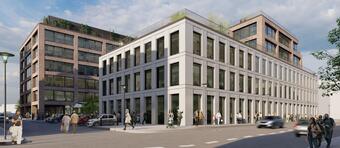Merkuria was bought by Skanska from HB Reavis five years ago, with the intention of demolishing it and putting up a new office complex in its place. "After a detailed analysis and studies, we knew that we could not preserve the house for many reasons," said Eva Nykodymová, who is in charge of the demolition of Merkuria in Skanska together with her colleagues. "For example, there was only one underground floor, which would not be enough for the required number of parking spaces, the problem was also the insufficient spatial capacity for the air handling system and the overall poor condition of the supporting structure. Therefore, unfortunately, we had to proceed with the demolition," she explained.
Thanks to a sufficient time subsidy, Skanska decided to start demolition in the Czech Republic in a unique way. She gradually dismantled the building and is trying to find another use for all the materials and equipment. Place
the demolition is therefore called "remolition". "It's not just about reducing waste, which Skanska has like Sweden
business in the blood, but also from a human point of view. You don't want to take those things and simply throw them away when they can be useful to someone else," added Eva Nykodymová. The developer first had to do a pre-demolition audit to find out what the building has to offer, as there is no detailed technical documentation for the more than fifty-year-old building.
The first step was to get all the equipment together. Sorting and searching for new owners followed
users. Despite the difficulties, most of the materials were sold or donated to various institutions and individuals. Some of the materials, including concrete, steel and paving, will be reused in the construction of the new Mercury office complex. According to Skansky's estimates, it will be possible to recycle up to 80% of the materials from around 14.5 thousand tons. Roughly half of this is concrete, which Skanska can recycle and use in its constructions. Special difficulties were brought by materials such as polystyrene, which contained dangerous substances that made it impossible to recycle.
Nevertheless, the question arises from this method of demolition, why this procedure has not been practiced by builders for a long time? Some of the factors are legislative obstacles and the imprecise wording of the Waste Act. Different experts have different opinions. Unlike other countries, the Czech Republic also lacks a customer structure. "When I remove plasterboard from an object, it's waste. If I cut a board out of it, it doesn't have to be waste anymore. The third lawyer says that I changed the purpose of use, so it is waste," explained Eva Nykodymová. She added that other developers or institutions who are considering a similar way of demolishing old buildings are already coming to Skansky. "We share our approach very openly, we don't hide anything. Although we had to walk our way, it cost us time and money, but if it helps someone, then it's good. We all have the same goal."
Source of visualizations: www.skanska.cz



